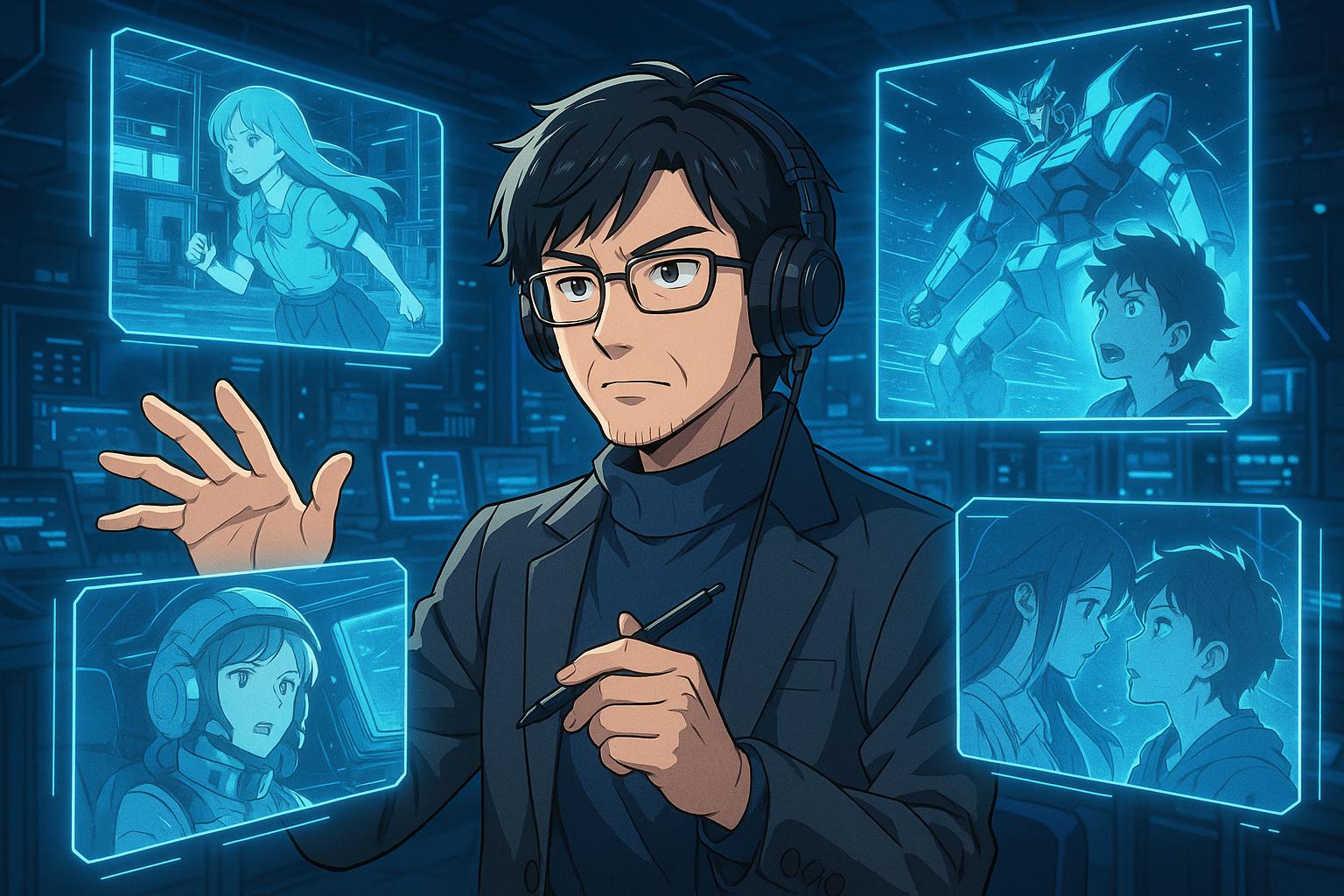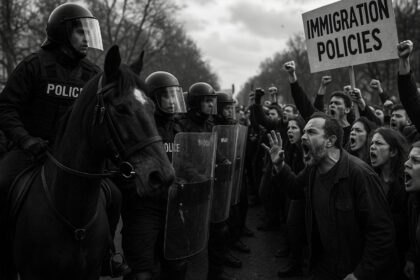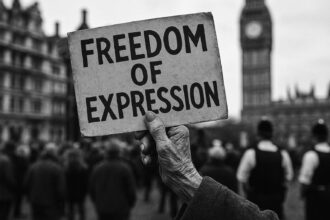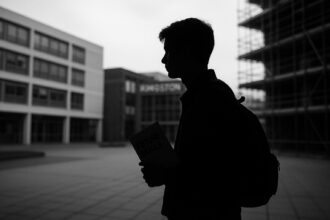As AI-driven tools redefine pre-production and lower barriers for creators, industry leaders predict a transformative era where storytelling accelerates and diversifies, though challenges around ethics and talent remain.
The film industry has long been a crucible for innovation, from the advent of sound to the rise of digital effects. However, as we stand at the brink of an AI-powered renaissance, the conversation is shifting dramatically towards the role of generative technology in storytelling. According to Jason Zada, a director and creative technologist acclaimed for his work in both film and digital marketing, we are entering a transformative era. Zada, founder of Secret Level—the studio behind Coca-Cola’s AI-driven Christmas commercial—believes that AI is not merely a tool but a catalyst for creative redefinition, offering unprecedented possibilities in content creation.
In an industry where speed and efficiency often dictate success, Zada highlights that AI technologies, such as Google’s video AI Veo 3 and various generative art models, have revolutionised pre-production workflows. “For us, pre-production is the new post-production,” he explains, articulating how AI allows filmmakers to envision scenes with accuracy that traditional methods could only dream of. By enabling real-time iterations, AI not only streamlines the creative process but also raises the financial stakes, as smaller teams can produce high-quality results typically reserved for larger productions.
Zada’s reflections on AI resonate with sentiments expressed by others in the industry. Netflix Co-CEO Ted Sarandos echoes this as he asserts that AI can democratise filmmaking, making advanced visual effects accessible to smaller-budget creators. In contrast, renowned director James Cameron has emphasised AI’s potential to reduce production costs by enhancing the efficiency of visual effects, while also maintaining that human creativity is irreplaceable—an argument that Zada acknowledges, affirming that AI must complement, not replace, human artistry.
As the landscape of filmmaking transforms, Zada suggests that we are approaching a “storytelling boom.” The anime industry alone can leverage AI to accelerate production timelines significantly. Where a traditionally animated feature film may take three years, Zada’s team is achieving similar outcomes in just nine months to a year. This shift is not motivated by a desire to cut budgets but rather to allow stories to flourish. With an abundance of content required by streaming services, generative AI might be the key to ensuring that creators never run out of material.
Zada’s vision further extends to what he terms “story worlds”—cross-platform ecosystems where narratives can span films, albums, and digital content. This interconnected approach allows creative ideas to evolve fluidly, which is particularly relevant in today’s fast-paced media landscape where audiences consume entire seasons of shows in mere days. He envisions a future where the next generation of directors may not be trained in conventional film schools but may come from all walks of life, empowered by new tools that break down traditional barriers.
While the benefits of AI in filmmaking are evident, challenges persist. As Zada notes, a talent gap may arise as the industry adapts to these new technologies. The demand for skilled individuals who understand the nuances of AI in production will grow, yet many professionals are still untrained in these areas. “We’re still experimenting,” he admits, noting that the rapid evolution of AI has created a fertile yet uncertain landscape for storytelling.
Other companies are exploring this new terrain. Startups like Promise are developing AI tools for creating films and series, while companies like Lightricks aim to democratise filmmaking by enabling extensive editing options for smaller projects. However, these innovations come with ethical questions about job security and artistic integrity. Concerns have been raised within the industry regarding the potential for AI to replace human elements in production, particularly among background actors. Prominent voices, including those from actors’ unions, emphasise the need for protective measures around the use of AI to ensure fair treatment within an evolving market.
Critics often argue that AI merely remixes existing content rather than creates original work. Zada counters this by likening the practice to traditional artistic methods. “Artists steal from artists,” he states, reinforcing the age-old truth that inspiration often comes from imitation. However, he cautions against indiscriminate prompting, which can venture into the territory of intellectual property infringement, delineating a need for creative nuance in every aspect of the process.
As the industry navigates these uncharted waters, the potential for AI to empower diverse voices is striking. Cristóbal Valenzuela, CEO of Runway, advocates for AI’s role in enabling artists to tell stories that reflect varied experiences, underscoring the belief that these tools can celebrate diversity rather than constrain it.
The future remains uncertain but exhilarating. While the next generation of filmmakers may emerge from unexpected backgrounds, the essence of storytelling will continue to thrive as technology continues to evolve. Whether these changes are hailed as a revolution or viewed with suspicion, one thing is clear: AI is set to redefine what it means to be a creator in the film industry.
Reference Map:
- Paragraph 1 – [1], [2]
- Paragraph 2 – [1], [2], [5]
- Paragraph 3 – [3], [4]
- Paragraph 4 – [1], [2], [3], [4]
- Paragraph 5 – [6], [7]
- Paragraph 6 – [1], [7]
Source: Noah Wire Services
- https://www.creativebloq.com/ai/why-ai-means-anyone-can-be-a-filmmaker-not-just-hollywood-insiders – Please view link – unable to able to access data
- https://www.cinemablend.com/movies/ted-sarandos-take-james-cameron-revised-thoughts-ai-in-hollywood – Netflix Co-CEO Ted Sarandos and director James Cameron have differing views on AI’s role in Hollywood. Cameron advocates for AI to reduce blockbuster production costs by streamlining visual effects, while Sarandos focuses on AI enhancing creativity, aiding tasks like pre-visualization and set design, and democratizing filmmaking by providing smaller-budget creators access to high-end effects.
- https://www.reuters.com/technology/artificial-intelligence/andreessen-horowitz-backed-studio-promise-start-producing-movies-series-using-ai-2024-11-19/ – Promise, a startup backed by Andreessen Horowitz and Peter Chernin, plans to produce films and series using generative AI tools. Founded by George Strompolos, Jamie Byrne, and Dave Clark, Promise is developing ‘Muse,’ a production software integrating AI throughout content creation, following similar AI tools like OpenAI’s Sora and Adobe’s AI model for generating video content from text inputs.
- https://qa.time.com/6308278/cristobal-valenzuela/ – Cristóbal Valenzuela, CEO of Runway, leads AI-video-generation technology used in ‘Everything Everywhere All at Once’ and ‘The Late Show.’ He believes AI will dominate media content creation, aiming to empower artists rather than replace them, and views AI as a tool for democratizing filmmaking, enabling diverse voices and stories to emerge.
- https://www.ft.com/content/37a8e470-1521-4ba1-a40d-e2880da9aceb – James Cameron, creator of ‘The Terminator,’ commented that an advanced AI system could potentially perform artistic roles such as writing scripts and directing movies. He noted that since humans have been creating art since gaining consciousness, an artificial general intelligence (AGI) with ego and consciousness could possibly do the same. These remarks come amidst ongoing debates in Hollywood about the impact of AI on the industry. The release of high-quality AI-generated content by OpenAI has provoked both fascination and concern among filmmakers. While Cameron acknowledges the technology’s potential, he believes it currently lacks the capacity to replace human creativity and emotion in filmmaking. He sees promise in AI aiding with mundane tasks, allowing directors to focus on more creative aspects. Cameron, an enthusiast of science and technology, aims to leverage 3D film technology and explore opportunities in the content space. Despite his embrace of technological advancements, he contends that machines cannot replicate the unique, human performances of actors like Arnold Schwarzenegger.
- https://www.axios.com/2024/02/28/lightricks-ai-movie-maker-openai-sora-competitor – Lightricks, known for Facetune and Photoleap, introduced LTX Studio, an AI video tool capable of generating characters, scenes, storyboards, and entire movies from text descriptions. This browser-based tool aims to democratize filmmaking by offering extensive editing and control options, setting it apart from other tools like Runway and OpenAI’s upcoming Sora. While there are concerns about AI eliminating jobs and harming the arts, Lightricks envisions its initial use for smaller projects and storyboarding rather than complete feature films. The company, which began working on LTX Studio last year, now dedicates about a quarter of its workforce to the project.
- https://time.com/6297575/even-ai-filmmakers-think-hollywoods-ai-proposal-is-dangerous/ – A proposal by Hollywood producers to utilize AI for creating digital replicas of actors is being criticized by the SAG-AFTRA union for potentially replacing background actors entirely. Studios already employ AI to render scenes and characters, promising efficiency and cost reductions while raising ethical concerns. Actors and AI experts, including Tye Sheridan and Nikola Todorovic, caution against such practices, highlighting the risks to actors’ livelihoods. AI tools empower independent filmmakers, allowing small-scale creators to produce highly realistic content without significant budgets. However, industry fears persist regarding workers’ protections and potential widespread job losses. Prominent actors and union leaders, like Fran Drescher, argue for fair treatment and informed consent in AI usage, emphasizing the importance of safeguarding actors’ careers and reputations amidst inevitable technological changes.













